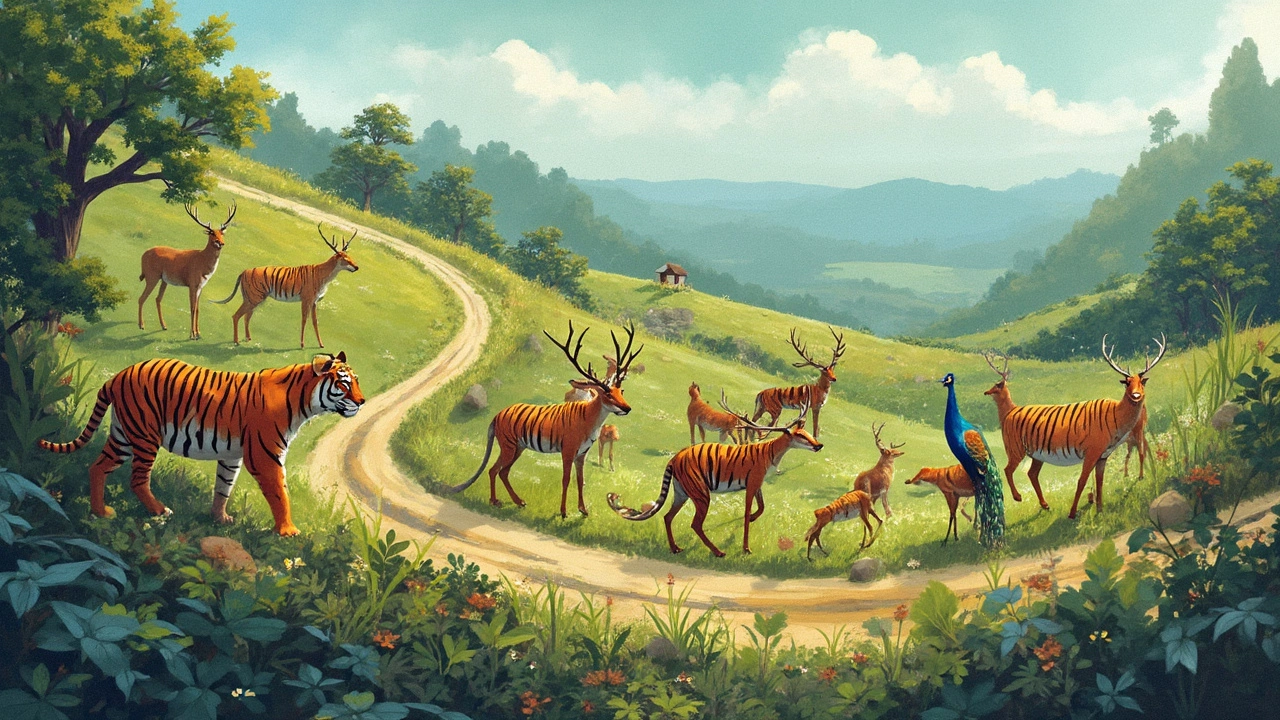If you take a walk in any park, you’re surrounded by life—but not in random chaos. There’s a hidden structure holding everything, from a single blade of grass to the largest forest. Nature isn’t messy; it’s perfectly stacked in levels. The way we organize life, from the tiniest living thing up to the entire planet, is what scientists call ecological hierarchy. You’ll be surprised just how much order there is when you know where to look.
What Makes a Level? Understanding the Building Blocks of Ecology
The world isn’t built in one sweep. Every living thing, and the spaces they fill, form part of a grand arrangement. To break it down, think about stacking Russian dolls. Each smaller doll fits into the next bigger one. Ecology stacks its own dolls too—starting small and zooming out, the seven classic levels are: organism, population, community, ecosystem, biome, biosphere, and, for some, the planet as a whole.
Every level answers a question. Who is this living thing? Who’s living with it? What does their neighborhood look like? And so on, each layer adding complexity. Scientists agreed on these seven levels to help explain patterns and relationships better. It’s not just a matter of classification—understanding these tiers is critical when we study disease outbreaks, predict climate change effects, or protect endangered species. With these levels as our roadmap, everything in life slides neatly into place.
It’s wild, but every advanced ecological model used to predict wildfire risks or ocean health, for example, starts with this nuts-and-bolts structure. By thinking in levels, we unlock how energy, matter, and information flow up and down the stack. Once you get this, everything outdoors has more meaning.
The Seven Levels Demystified: From Cells to the Biosphere
Let’s peel back each layer, starting at the bottom and working up. The foundation is the organism—the simplest, most basic unit. Here, it’s an individual. It could be a wolf, a sunflower, or even that bacteria on your skin. Flip the microscope and your population appears: a group of those organisms of the same species, hanging out or reproducing together, like all the wolves in a forest. If you group different populations—wolves, rabbits, trees—you get a community. This is life jumbled together, interacting, competing, teaming up for food, or simply surviving in the same space.
When you throw in the non-living stuff—sunlight, water, air, soil—into the mix, this becomes an ecosystem. Now you’re talking about not just who’s there, but how they all cope with weather, terrain, and the chemical soup around them. Step bigger and you reach a biome: vast zones that cover swathes of Earth, defined not by who’s living there but by climate and common features, like tundra, rainforest, or desert. The biosphere is every living thing on Earth and all their environments, knitted together in a thin layer that wraps the planet. For some, the ultimate level is simply "the Earth system"—everything connected, living and nonliving, in a blue marble spinning through space.
Here’s a handy breakdown in a table:
| Level | Description | Real-World Example |
|---|---|---|
| Organism | Individual living thing | A single spotted owl |
| Population | Group of the same species in an area | All spotted owls in a forest |
| Community | Different species living together | Owls, mice, insects, oaks in a woodland |
| Ecosystem | Community plus non-living parts | Woodland life and its soil, rocks, water |
| Biome | Major zones defined by climate | Temperate forests |
| Biosphere | All life and environments | Every ecosystem on Earth combined |
| Planet system | Includes physical Earth and interacts with atmosphere | Whole Earth and its cycles |

How the Levels Interact: Connections That Shape Our Planet
Don’t think of these levels as boxes—think of them as a series of overlapping stories. What makes ecology mesmerizing is how these levels constantly talk to each other. The health of a single fish can ripple up to shake a whole lake’s food web, and global events like volcanic eruptions can wipe out communities or build new land for new ones to grow.
This interaction is why a farmer losing their bees can threaten entire crop systems, or why the disappearance of a top predator (like wolves) sends shockwaves through vast woodlands. Ecologists call this a "trophic cascade"—a domino effect from one level to the next. It’s the blueprint for why rebuilding wetlands can cool cities or planting forests can slow climate change.
We’ve also seen whole communities wiped out by sudden changes—the 1980 eruption of Mount St. Helens, for instance, cleared forests and reshaped rivers. But within a few years, life came flooding back. Pioneer species, like lupines and rodents, were first to reappear, laying groundwork for richer communities. It’s a perfect lesson: even when levels are knocked off-balance, they interact and recover together, never in isolation.
Examples in Every Corner: Ecology in Action Around You
Slide outside and you’ll spot these levels everywhere. In New York’s Central Park, pigeons flocking together are a population. The mix of squirrels, pigeons, trees, and urban raccoons? That’s the community. Add lakes, wind, the soil, and you’ve got a full urban ecosystem. Zoom out, and you see New York nestled in a temperate deciduous forest biome. Every time you spot a garden spider, consider you’re seeing ecology’s bottom level at work as it patrols its web, preying on pests, playing its role as an organism.
One cool example: the Serengeti in Africa isn’t just famous for lions and wildebeest migration. It’s a textbook biome, and each level shapes how this massive system survives everything from droughts to tourist crowds. When conservationists talk about "saving the Serengeti," they’re really talking about defending every one of those levels—down to the insects pollinating plants and the soil microbes recycling dung.
Humans, too, have their own ecological footprint. Take the North American prairie: bison herds (populations) once shaped entire plant communities by grazing patterns—all of which impacted soil health, drought resistance, and even plant evolution. Modern farms interrupt these systems, showing how much we control or disrupt nature’s levels without even noticing it.

Why Knowing the Seven Levels Matters More Than Ever
It isn’t just for science homework. The world’s biggest environmental struggles turn on how well we get these levels. Climate change isn’t just ice melting somewhere far away—it hits populations, shrinks communities, wipes out habitats, and messes with biomes. Conservation experts rely on the 7 levels of organization in ecology to fix vanishing species, predict diseases like bird flu, and prep for disaster recovery. Health experts now track how communities of microbes can impact our own health, from allergies to depression.
Tackling invasive species? You start by understanding which population is out of balance and how that disrupts entire communities, right up to the whole ecosystem. The framework also guides pollution control, as contaminants might wipe out one level but then build up through food webs to higher ones, eventually reaching humans. That’s why monitoring fish or birds often gives early warning when a bigger system is in trouble.
So next time you see a city garden, a wild meadow, or even your aquarium, remember: it’s not random. Every patch of life has its story, stacked in these seven neat levels. Getting how they fit together helps crack mysteries about how our planet works—and, on a good day, how to repair some of the damage we do along the way.






